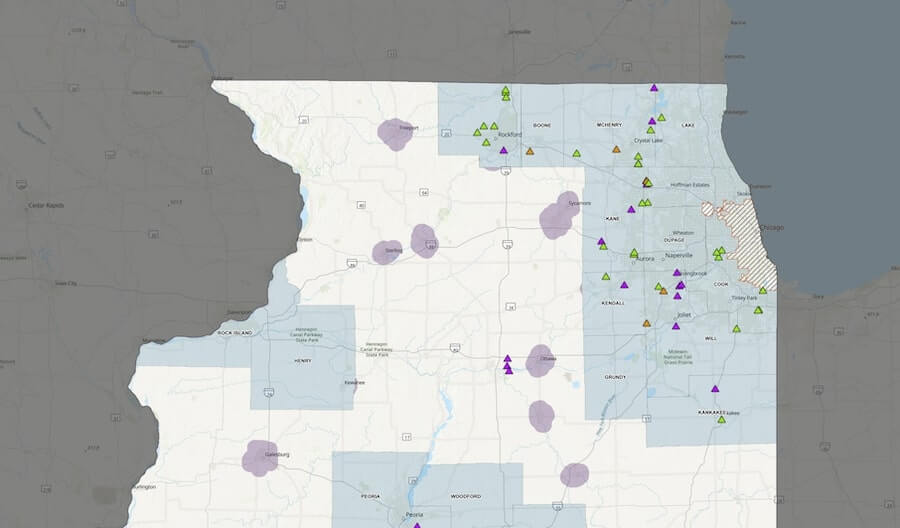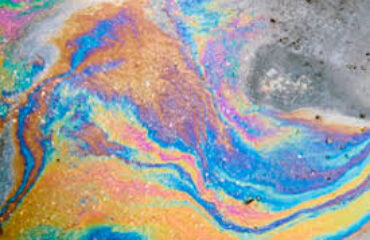
CCDD stands for Clean Construction Demolition Debris. Similarly, USF is an abbreviation for Uncontaminated Soil Fill. In Illinois both of these terms are used interchangeably as “Clean Fill”.
Both of these terms refer to a body of laws unique to Illinois whereby clean materials can be put into old gravel, sand or limestone mines. These deposits of materials are an alternative to landfills which are much more expensive and usually further away than a CCDD or USF operation fill site.
To properly answer the question of what “it costs to dump clean fill” we first need to deconstruct what you mean.
Three Components to Clean Fill Pricing:
- Science
- Transportation
- Dumping
Cost for the science for clean fill.
There are three sets of regulations regarding CCDD & USF created by the Illinois EPA. They are commonly known by their regulation name LPC-662, LPC-663 and LPC-667. For our purposes we won’t be talking about LPC-667. It speaks to concrete fill which is painted. The paint needs to be tested to know if it contains heavy metals like lead. There are two different price-points between LPC 662 and 663 because one requires more lab work.
Clean Fill Type 1: CCDD LPC-662:
Fill material which we believe should fall under the 662 regulation comes from non-industrial sites and places were the risk that the soil is impacted is low. The price to complete the science for LPC-662 projects come from these components:
- pH Test – for soil to be deposited at a clean fill CCDD facility it needs to have a pH between 6.26 – 9.0. The reason for this is that heavy metals which are toxic for humans to ingest are more mobile in acidic solutions.
- EDR Report – EDR Reports are environmental database searches which show contamination in a radius of 1/8 mile around a point. We run these reports to make sure there aren’t any known issues that could impact the soil which could be found in the database.
- CCDD Paperwork – This paperwork is what the CCDD facility needs to let you dump materials.
When an environmental company is asked to perform these services there is cost for labor to take the samples, interpret the data and fill out the forms. All of this could be done by our clients, but often times it’s easer to hand of the project and the liability to a company like A3 Environmental Consultants.
The cost for the Laboratory, EDR Report, and environmental consultant’s time for LPC-662 brings the cost of CCDD to about $1,500
Clean Fill Type 2: LPC-663
Fill which we believe should fall under the LPC-663 classification comes from industrial source sites which we believe could be potentially impacted. We start with the assumption that the soil is contaminated and work backward to prove it is not. There are three components of LPC-663:
- EDR Report – This environmental database report gives us insight into how far away known contamination is based on Federal, State, County and Municipal database entries. This also helps us understand what kind of laboratory work we should perform. We try to perform the minimum acceptable laboratory work while keeping in mind that if the soil comes back as elevated for any of the MAC values (Maximum Allowable Concentration), we’ll have to ship it to a Subtitle-D landfill who’s laboratory requirements might be different or more stringent. It’s a balancing act to keep prices low for the client while not doing the job twice.
- Laboratory Analytical – As described above, the lab work we do is informed by what chemical constituents might be found, based on the EDR Report.
- CCDD Paperwork – With LPC-663, the paperwork needs to be stamped by a Professional Geologist or Engineer. Unfortunately these two types of people cost more in labor than your typical geologist.
The cost for the Laboratory, EDR Report, and environmental consultant’s time for LPC-663 brings the cost of CCDD to about $2,100.
Transportation Costs for Clean Fill
There are four components that make up transportation costs for uncontaminated soil fill operations:
- Loading – How will you load the truck? This is typically done with heavy machinery and is often a different contractor from who hauls the material.
- Volume – The volume of material you are moving and the capacity of the dump trucks. Dump trucks hold 20 tons maximum. If you have more material than 20 tons, you’re going to need more trucks.
- Distance – Distance can be thought of as “Time” too because travel distance is really travel time. The more often a truck can come back to your site to be reloaded and dump again, the lower the cost per job. This is another benefit of the CCDD fill operations, there are more of them and they are closer than landfills typically. The shortened distance is another reason the cost to use them is less.
Dumping at Clean Fill Operations:
There is really only one factor at play when looking at costs to dump at a CCDD facility. That factor is weight. You’ll be charged a certain amount per ton. Typically this rate per ton is about half of a Subtitle-D landfill. There can be substantial savings for anyone who goes through this process successfully. In any case, soil needs to be tested so it can be disposed of at a Subtitle D landfill to so it pays to do it right.
Where are the Clean Fill Operations in Illinois?
If you need support with Clean Construction Demolition Debris or Uncontaminated Soil Fill, give A3E a call. A3 Environmental Consultants can be reached at (888) 405-1742 or by email at Info@A3E.com.



